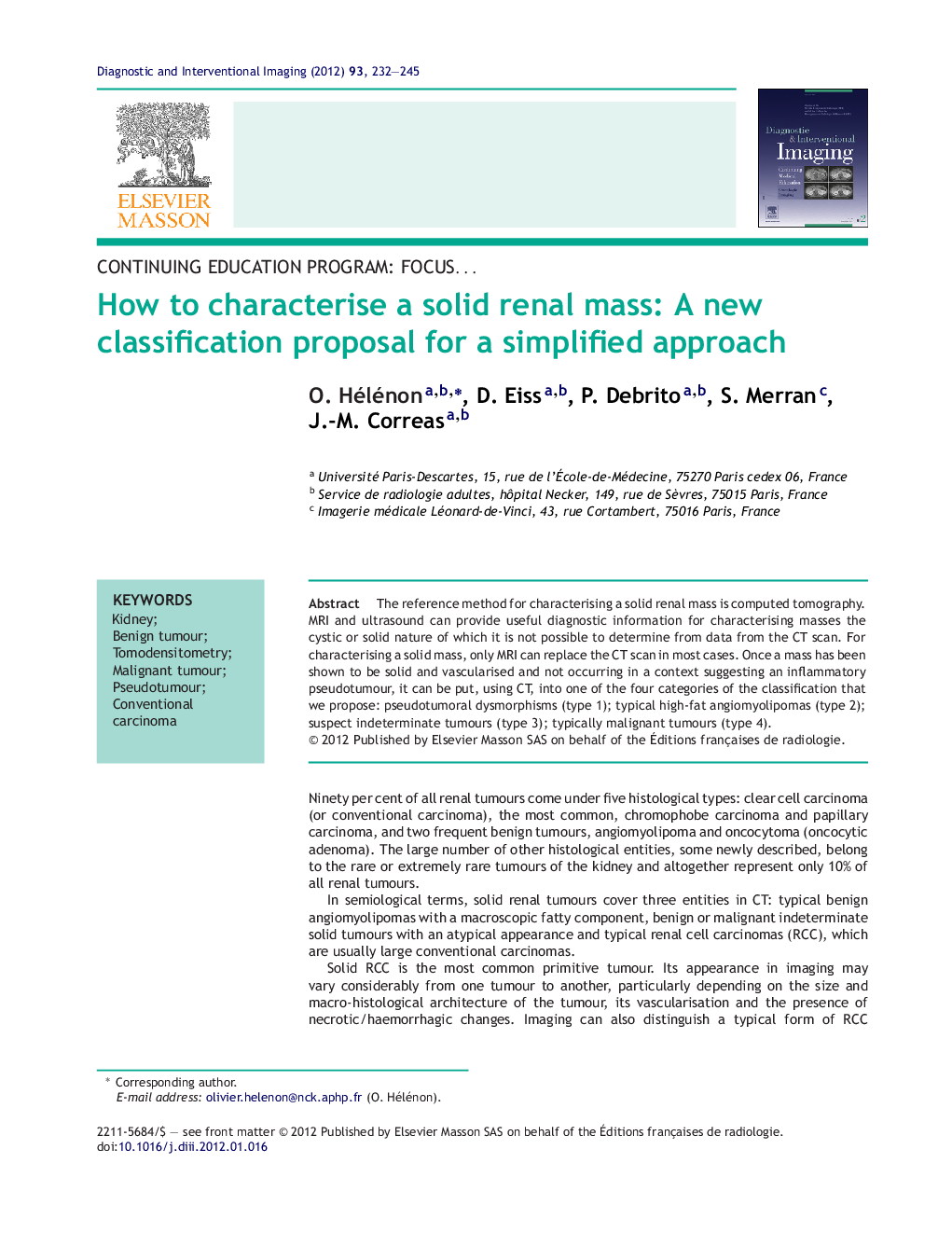| Article ID | Journal | Published Year | Pages | File Type |
|---|---|---|---|---|
| 2725910 | Diagnostic and Interventional Imaging | 2012 | 14 Pages |
Abstract
The reference method for characterising a solid renal mass is computed tomography. MRI and ultrasound can provide useful diagnostic information for characterising masses the cystic or solid nature of which it is not possible to determine from data from the CT scan. For characterising a solid mass, only MRI can replace the CT scan in most cases. Once a mass has been shown to be solid and vascularised and not occurring in a context suggesting an inflammatory pseudotumour, it can be put, using CT, into one of the four categories of the classification that we propose: pseudotumoral dysmorphisms (type 1); typical high-fat angiomyolipomas (type 2); suspect indeterminate tumours (type 3); typically malignant tumours (type 4).
Related Topics
Health Sciences
Medicine and Dentistry
Health Informatics
Authors
O. Hélénon, D. Eiss, P. Debrito, S. Merran, J.-M. Correas,
